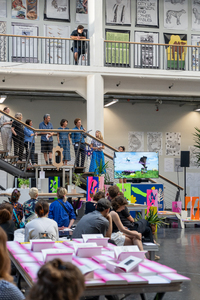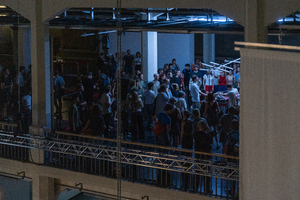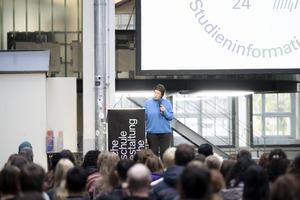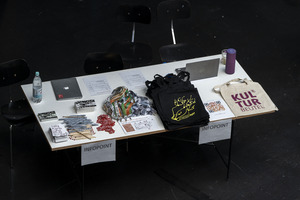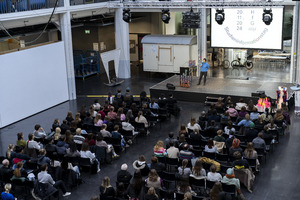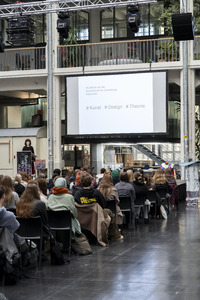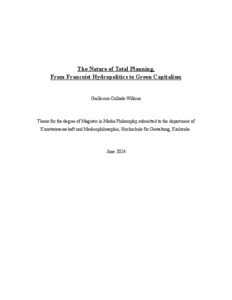"Kunstwissenschaft und Medienphilosophie"
| Begriff | Kunstwissenschaft und Medienphilosophie |
| Metakey | Studiengang (institution:program_of_study) |
| Typ | Keyword |
| Vokabular | HfG |
42 Inhalte
- Seite 1 von 4
Rundgang Opening Day 2024
- Titel
- Rundgang Opening Day 2024
- Datierung
- 18.07.2024
- Titel
- Rundgang Opening Day 2024
- Urheberrechtshinweis
- © Staatliche Hochschule für Gestaltung Karlsruhe; Matylda Eaton
- Freigabe Nutzung HfG
- Medienersteller/in
- Semester
- Studiengang
- Importiert am
- 26.08.2024
- Übergeordnete Sets
- 1
Rundgang Opening Day 2024
- Titel
- Rundgang Opening Day 2024
- Datierung
- 18.07.2024
- Titel
- Rundgang Opening Day 2024
- Urheberrechtshinweis
- © Staatliche Hochschule für Gestaltung Karlsruhe; Matylda Eaton
- Freigabe Nutzung HfG
- Medienersteller/in
- Semester
- Studiengang
- Importiert am
- 26.08.2024
- Übergeordnete Sets
- 1
Rundgang Opening Day 2024
- Titel
- Rundgang Opening Day 2024
- Datierung
- 18.07.2024
- Titel
- Rundgang Opening Day 2024
- Urheberrechtshinweis
- © Staatliche Hochschule für Gestaltung Karlsruhe; Matylda Eaton
- Freigabe Nutzung HfG
- Medienersteller/in
- Semester
- Studiengang
- Importiert am
- 26.08.2024
- Übergeordnete Sets
- 1
Rundgang Opening Day 2024
- Titel
- Rundgang Opening Day 2024
- Datierung
- 18.07.2024
- Titel
- Rundgang Opening Day 2024
- Urheberrechtshinweis
- © Staatliche Hochschule für Gestaltung Karlsruhe; Matylda Eaton
- Freigabe Nutzung HfG
- Medienersteller/in
- Semester
- Studiengang
- Importiert am
- 26.08.2024
- Übergeordnete Sets
- 1
Informationstag HFG 24
- Titel
- Informationstag HFG 24
- Autor/in
- Datierung
- 20.11.2024
- Stadt
- Land
- Titel
- Informationstag HFG 24
- Urheberrechtshinweis
- © Staatliche Hochschule für Gestaltung Karlsruhe photo: Jehad Othman
- Rechtsschutz/Lizenz
- Medienersteller/in
- Studiengang
- Importiert am
- 27.11.2024
- Übergeordnete Sets
- 1
Informationstag HFG 24
- Titel
- Informationstag HFG 24
- Autor/in
- Datierung
- 20.11.2024
- Stadt
- Land
- Titel
- Informationstag HFG 24
- Urheberrechtshinweis
- © Staatliche Hochschule für Gestaltung Karlsruhe photo: Jehad Othman
- Rechtsschutz/Lizenz
- Medienersteller/in
- Studiengang
- Importiert am
- 27.11.2024
- Übergeordnete Sets
- 1
Informationstag HFG 24
- Titel
- Informationstag HFG 24
- Autor/in
- Datierung
- 20.11.2024
- Stadt
- Land
- Titel
- Informationstag HFG 24
- Urheberrechtshinweis
- © Staatliche Hochschule für Gestaltung Karlsruhe photo: Jehad Othman
- Rechtsschutz/Lizenz
- Medienersteller/in
- Studiengang
- Importiert am
- 27.11.2024
- Übergeordnete Sets
- 1
Informationstag HFG 24
- Titel
- Informationstag HFG 24
- Autor/in
- Datierung
- 20.11.2024
- Stadt
- Land
- Titel
- Informationstag HFG 24
- Urheberrechtshinweis
- © Staatliche Hochschule für Gestaltung Karlsruhe photo: Jehad Othman
- Rechtsschutz/Lizenz
- Medienersteller/in
- Studiengang
- Importiert am
- 27.11.2024
- Übergeordnete Sets
- 1
Informationstag HFG 24
- Titel
- Informationstag HFG 24
- Autor/in
- Datierung
- 20.11.2024
- Stadt
- Land
- Titel
- Informationstag HFG 24
- Urheberrechtshinweis
- © Staatliche Hochschule für Gestaltung Karlsruhe photo: Jehad Othman
- Rechtsschutz/Lizenz
- Medienersteller/in
- Studiengang
- Importiert am
- 27.11.2024
- Übergeordnete Sets
- 1
Informationstag HFG 24
- Titel
- Informationstag HFG 24
- Autor/in
- Datierung
- 20.11.2024
- Stadt
- Land
- Titel
- Informationstag HFG 24
- Urheberrechtshinweis
- © Staatliche Hochschule für Gestaltung Karlsruhe photo: Jehad Othman
- Rechtsschutz/Lizenz
- Medienersteller/in
- Studiengang
- Importiert am
- 27.11.2024
- Übergeordnete Sets
- 1
The Nature of Total Planning, From Francoist Hydropolitics to Green Capitalism
- Titel
- The Nature of Total Planning, From Francoist Hydropolitics to Green Capitalism
- Autor/in
- Beschreibung (de)
- Magisterarbeit in Medienphilosophie
- Beschreibung (en)
- Thesis for the degree of Magister in Media Philosophy
- Kategorie
- Schlagworte
- Datierung
- 06.06.2024
- Sprache
- Ort: Institution
- Land
- Titel
- The Nature of Total Planning, From Francoist Hydropolitics to Green Capitalism
- Titel (en)
- The Nature of Total Planning, From Francoist Hydropolitics to Green Capitalism
- Urheberrechtshinweis
- © Guillermo Collado Wilkins
- Rechtsschutz/Lizenz
- Freigabe Nutzung HfG
- Medienersteller/in
- Medien-Beschreibung (en)
- This paper provides a critical examination of ecological planning based on the continuities that it displays across seemingly disparate political projects and historical periods. In order to do so, it draws on the small rural valley of La Bizkaia in Navarre, Spain. It produces an environmental history of the valley through a detailed study of its hydro-forestry resources, periodising such history according to a materialist reading of its ‘metabolic regimes’. That is to say, through the particular configurations between the natural and social orders that dictate life in La Bizkaia.
Initially, the study introduces the valley’s natural characteristics and its property structure, laying the foundations upon which the rest of this paper sits. Subsequently, it undertakes a detailed investigation of Francoist interventions in the 1940s-60s; a massive monoculture of pine trees was planted by the Francoist Forestry Council, which radically undermined La Bizkaia’s natural systems and depopulated it. This paper thus analyses the planning logic behind this natural intervention which, borrowing a term from one of its draftsmen, is named ‘total planning’.
The thesis then explores contemporary management of the valley by the Government of Navarre, which has maintained ownership until this day, aligning its plans with the international protocols and standards characteristic of green capitalism. By looking at projects undertaken in the valley for nature conservation and climate change adaptation, which receive funding from the European Union, this research reveals the continuities between Francoist policies and green capitalism, and how both operate under the logic of Total Planning. Under this planning logic, they both fail to accommodate the unpredictability of political conflict and natural systems.
Planning thus serves as a lens to explore the political and epistemological dimensions of ecological thought, placing a materialist reading of a small case study into the broader context of contemporary ecological intervention.
- This paper provides a critical examination of ecological planning based on the continuities that it displays across seemingly disparate political projects and historical periods. In order to do so, it draws on the small rural valley of La Bizkaia in Navarre, Spain. It produces an environmental history of the valley through a detailed study of its hydro-forestry resources, periodising such history according to a materialist reading of its ‘metabolic regimes’. That is to say, through the particular configurations between the natural and social orders that dictate life in La Bizkaia.
- Alternativ-Text (de)
- Vollständiger Text der Magisterarbeit
- Alternativ-Text (en)
- Complete text of the Magisterarbeit
- Projektleiter/in
- Semester
- Studiengang
- Typ der Abschlussarbeit
- Importiert am
- 22.10.2024
- Übergeordnete Sets
- 0
Die Methode Duchamp – Magritte Abstract / Inhaltsv.
- Titel
- Die Methode Duchamp – Magritte Abstract / Inhaltsv.
- Untertitel
- Das „Musée d’Art Moderne. Département des Aigles” von Marcel Broodthaers unter dem Aspekt der strategischen Aneignung
- Autor/in
- Beschreibung (de)
- „Der Fall Marcel Broodthaers lädt den Rezipienten dazu ein, sich mit dessen Vorläufern auseinanderzusetzen. Nicht etwa, weil dort Geheimnisse aufzudecken wären – im Gegenteil, die broodthaers’schen Galionsfiguren sind in seinem Werk alle namentlich präsentiert –, sondern eher auf Grund der Tatsache, da er es wie kaum ein anderer verstanden hat, sich bestimmter Vorbilder zu bedienen, sprich, sich Teilaspekte aus deren Werken anzueignen und die darin enthaltenen Kerngedanken eigens fortzuschreiben. Dies geschieht auf eine Art und Weise, die es vermag, Hommage und Kritik zu vereinen.”
„Über zwei Doppelseiten hinweg breitet sich im Ausstellungskatalog zur Section des Figures [...] das graphisch aus, was Broodthaers als seine METHODE tituliert. Diese Blätter folgen in direktem Anschluß an das Vorwort, sie markieren den Anfang zu jenem Katalogteil, der sowohl inhaltlich, als auch formal maßgeblich vom Künstler gestaltet worden ist. Bereits die Typographie des Titelworts strahlt – in Majuskel gesetzt – eine hohe Wichtigkeit aus. Wer allerdings ausführliche Erläuterung erwartet hat, wird enttäuscht, es handelt sich vielmehr um eine anspielungsreiche Illustration als um eine schriftliche Erklärung, doch gleichwohl trägt diese Ausführung den Charakter des Manifests.”
- „Der Fall Marcel Broodthaers lädt den Rezipienten dazu ein, sich mit dessen Vorläufern auseinanderzusetzen. Nicht etwa, weil dort Geheimnisse aufzudecken wären – im Gegenteil, die broodthaers’schen Galionsfiguren sind in seinem Werk alle namentlich präsentiert –, sondern eher auf Grund der Tatsache, da er es wie kaum ein anderer verstanden hat, sich bestimmter Vorbilder zu bedienen, sprich, sich Teilaspekte aus deren Werken anzueignen und die darin enthaltenen Kerngedanken eigens fortzuschreiben. Dies geschieht auf eine Art und Weise, die es vermag, Hommage und Kritik zu vereinen.”
- Beschreibung (en)
- ‘The case of Marcel Broodthaers invites the recipient to engage with his precursors. Not because there are secrets to be uncovered there - on the contrary, Broodthaers' figureheads are all presented by name in his work - but rather due to the fact that he understood better than almost anyone else how to make use of certain role models, i.e. to appropriate partial aspects from their works and to continue the core ideas contained therein in his own way. This is done in a way that manages to combine homage and criticism.’
‘Over two double-page spreads in the exhibition catalogue for Section des Figures [...] Broodthaers' METHOD is presented graphically. These pages follow directly after the preface and mark the beginning of the section of the catalogue that was designed by the artist both in terms of content and form. Even the typography of the title word - set in majuscule - radiates great importance. However, anyone expecting a detailed explanation will be disappointed; it is more of an allusive illustration than a written explanation, but this version nevertheless has the character of a manifesto.’
- ‘The case of Marcel Broodthaers invites the recipient to engage with his precursors. Not because there are secrets to be uncovered there - on the contrary, Broodthaers' figureheads are all presented by name in his work - but rather due to the fact that he understood better than almost anyone else how to make use of certain role models, i.e. to appropriate partial aspects from their works and to continue the core ideas contained therein in his own way. This is done in a way that manages to combine homage and criticism.’
- Kategorie
- Datierung
- November 2010
- Sprache
- Ort: Institution
- Titel
- Die Methode Duchamp – Magritte Abstract / Inhaltsv.
- Urheberrechtshinweis
- Alice Wilke
- Rechtsschutz/Lizenz
- Freigabe Nutzung HfG
- Medienersteller/in
- Beziehung/Funktion
- Projektleiter/in
- Semester
- Studiengang
- Typ der Abschlussarbeit
- Archiv-Signatur
- HfG HS 2010 09
- Externes Archiv
- Importiert am
- 10.01.2025
- Übergeordnete Sets
- 1
